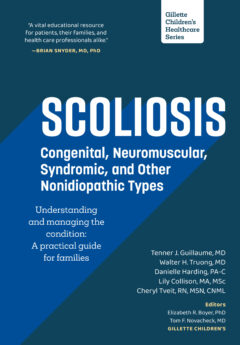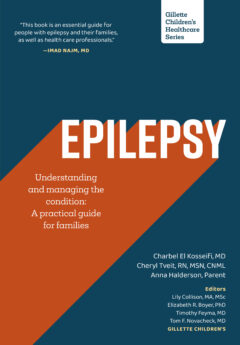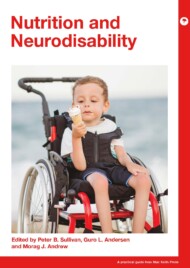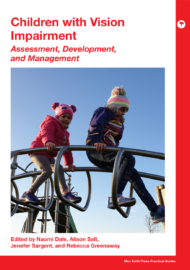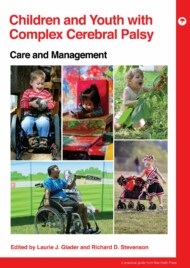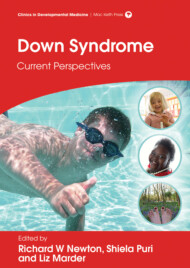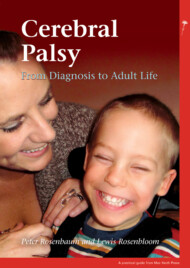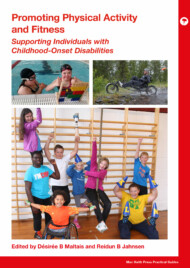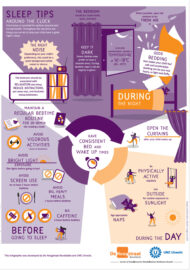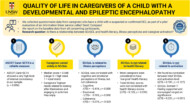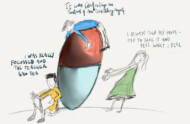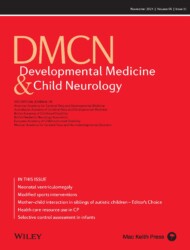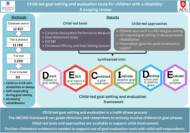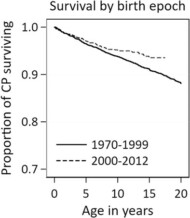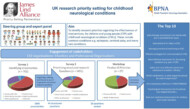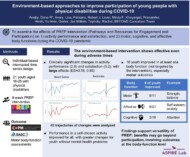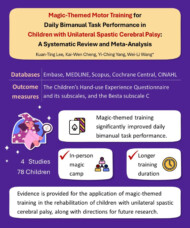Welcome
Start exploring here! We hope this will be a useful resource to help you find the information you need about cerebral palsy and other childhood-onset disabilities. We want to help you to find answers to your questions – so please let us know what else you would like us to cover. Here we are presenting videos, summaries, research information and other resources.
Read on for more
Ways we can help
1
Family-friendly Books
Discover our collection of family-friendly books featuring accessible, research-based insights. These titles include the perspectives of families and individuals with lived experience, offering valuable guidance while supporting parents on their journey.
2
Free Chapters
We have selected a range of chapters from our books, offering helpful insights and practical tips. Our chapters summaries highlight key points. View the full chapter to explore each topic in more depth.
3
The Knowledge Bank
Explore the answers to your questions here. Find out more about conditions, treatments, interventions, and all aspects of care. Follow signposts to find more in-depth, evidence-based information from Mac Keith Press content, as well as other great sources of knowledge.
4
Plain Language Summaries
Plain language summaries are an effective way of communicating scientific research to a wider audience. By presenting the key findings and significance of a study in easy-to-understand language, the content becomes more accessible to more people. Here we present summaries of papers published in Developmental Medicine & Child Neurology (DMCN).
5
Helpful Videos
Here you will find a collection of short videos from authors and editors summarising their work. They cover Developmental Medicine & Child Neurology (DMCN) articles, Mac Keith Press books and e-learning. The aim of the videos is to help viewers get a clear understanding of why the research is important, how it was carried out, and real-world implications.
Gillette Children’s Healthcare Series
The goal of the Gillette Children’s Healthcare Series is to empower families through a greater understanding of their condition and therefore help optimize outcomes for children, adolescents and adults living with these childhood-acquired and largely lifelong conditions.
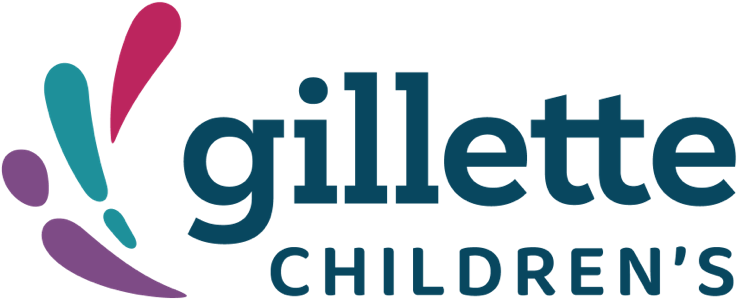
Free chapter downloads
The Knowledge Bank
Explore the answers to your questions here. Find out more about conditions, treatments, interventions, and all aspects of care. Follow signposts to find more in-depth, evidence-based information from Mac Keith Press content, as well as other great sources of knowledge.
How do researchers decide what to study?
Many factors can contribute toward deciding what to study, for example: personal interest, gaps in the literature, relevance to current issues, and understanding what matters to their patients and their support networks.
To learn more about this last point, see a paper on ‘UK research priority setting for childhood neurological conditions’.
How do researchers decide what to study?
UK research priority setting for childhood neurological conditions
Full paper: https://onlinelibrary.wiley.com/doi/10.1111/dmcn.16021
Plain language summary: https://onlinelibrary.wiley.com/doi/10.1111/dmcn.16099
Author podcast: https://www.youtube.com/watch?v=F41Bjh_y50A
In this project, we wanted to find the most important unanswered questions about treatments, or therapies for children and young people with childhood neurological conditions such as epilepsies, cerebral palsy, and many rare conditions. This is called a Priority Setting Partnership.
Priority Setting Partnerships aim to help patients, carers, and health professionals work together to agree research priorities. There is a structured way to do this. It includes two surveys, the first to ask people questions that they may have about childhood neurological conditions. Then, after a team of professionals have reviewed the questions, and checked if they are answered, another survey asks people to choose their 10 highest priority questions. After many people have ranked the questions, the highest-ranking questions are discussed in a workshop to choose the top 10.
People were invited to do the surveys via charities, clinical services, and social media. In total 701 people completed survey one and they had 1800 questions. After removing repeats, grouping them, then checking medical evidence, there were 44 research priorities. In survey two, 1451 people selected their top 10 questions. Over three-quarters of both survey responders were parent-carers or young people with childhood neurological conditions. When everyone’s priorities were combined the top 26 were chosen. They were discussed at a workshop with 14 healthcare professionals, 11 parent-carers, and 2 young people; and the top 10 priorities were agreed.
The 10 priority questions include: therapies, medications and treatments for rare and common childhood neurological conditions, and supporting the challenges that young people with many different childhood neurological conditions may have e.g. sleep difficulties, supporting emotional wellbeing, and managing symptoms like pain.

What is a meta-analysis?
A meta-analysis combines the results of multiple scientific studies and provides statistics. It is conducted to derive conclusions from a body of research.
What are some key strategies for promoting physical activity among individuals with childhood-onset disabilities?
Key strategies for promoting physical activity in individuals with childhood-onset disabilities include fostering intrinsic motivation, boosting self-efficacy, providing social support, and ensuring equitable access to adaptive equipment like arm-propelled cycles. These approaches aim to sustain lifelong physical activity and enhance well-being. For more information, please read the extract from chapter 5 of ‘Promoting Physical Activity and Fitness’. Full chapter available to download.
What are some key strategies for promoting physical activity among individuals with childhood-onset disabilities?
Extract from Mailtais and Jahnsen, ‘Promoting Physical Activity and Fitness‘, Chapter 5, pp. 65-66.
Using Assistive Devices and Other Technology To Do Physical Activity
For many people with disabilities, a well-adjusted assistive device is essential for their opportunity to participate in an activity regardless of age. Studies show that lack of suitable equipment is one of several reasons for low activity levels both in children and adults (Engel-Yeger et al. 2009; Bedell et al. 2013). Assistive devices for leisure activities are equipment that is specifically designed to help individuals with disabilities to participate in play and sports (Gjessing et al. 2018). Examples are an arm-propelled cycle, a bicycle with an assistive motor, a motorized chair for floor ball, and a sit-ski and balance-frame for cross-country skiing. Many individuals with childhood-onset physical disabilities need adaptation of activities in order to participate satisfactorily. The availability of assistive devices differs from country to country. Several countries have systems for public funding of such devices, seeking to give equal opportunities of assistive devices regardless of socioeconomic status.
Principles for Device Selection
When acquiring an assistive device (i.e. if a wheelchair user wants an arm-cycle for participation reasons), selection of an appropriate bicycle and proper adaptation of this bicycle are essential (Gjessing et al. 2018). Individuals have different needs based on demographics, geography, activity preference, and individual capacity. A number of arm-cycle alternatives exist. Cooperation between a professional and the user is essential in order to find the most suitable equipment. The professional is often a physiotherapist or occupational therapist. Local variation in competence regarding assistive devices is significant. Educating professionals in order to enhance knowledge of selecting and adapting assistive devices has to be emphasized. Giving more people with physical disabilities the opportunity to participate in physical activities and the selection of the best equipment to support this is vital.
A study on the experiences of children and young people with acquiring and using assistive devices showed the variation when trying new equipment (Gjessing et al. 2018). Some expressed that it is obvious how to use the equipment and initiate the activity immediately, while others were sceptical about trying out new equipment. ‘How fast will I go? Will I manage it? What if I don’t? Can anyone see me?’ are among their explicit concerns. In such situations, presence of a confident and experienced professional or a peer role model can be very helpful. A role model is often an older person with a comparable disability or situation, who may manage the same assistive device.
‘Jacob is about to learn sit-ski with his father in the alpine area. An instructor on alpine skis is telling him how to do it, but Jacob does not quite manage. He is starting to be a bit frustrated when another man in a sit-ski comes towards him and says ‘hi!’ Jacob recognizes the fellow from the day before and knows that he uses a wheelchair, just like himself. The man willingly offers to show Jacob how to ski. Jacob observes with great enjoyment, especially how he uses his crutch skis when performing downhill turns. Jacob thinks that the task is difficult, but now he is determined to make it!’.
Social, economic or environmental factors can affect participation for disabled children. You can find useful information on how to participation for children with neurodisability in chapter 21 of ‘Participation‘, edited by Christine Imms and Dido Green. Free chapter download.
DMCN articles
For further information, read the below papers on physical activity in DMCN:
- Identifying the top 10 priorities of adolescents with a physical disability regarding participation in physical activity: A Delphi study and its plain language summary
- Community-based physical activity interventions for adolescents and adults with complex cerebral palsy: A scoping review and its plain language summary
- Barriers and facilitators of physical activity participation for young people and adults with childhood-onset physical disability: a mixed methods systematic review and its plain language summary and associated commentary by a parent
What are the benefits or disadvantages of a gastronomy tube?
When a child has a neurodevelopmental disability or complex medical need, one of the first areas of concern for paediatricians is to ensure adequate and safe nutritional intake. Children with neurological impairment are at increased risk of malnutrition due to nutritional and non-nutritional factors.
What are the benefits or disadvantages of a gastronomy tube?
Learn more about the decisions parents face in chapters 5 and 10 from Nutrition and Neurodisability (Sullivan, 2020). Free download.
You can also find useful information in the DMCN paper Outcomes for gastrostomy-fed children and their parents: qualitative findings from the ‘Your Tube’ study and its associated commentary Gastrostomy as a liberating procedure for parents of children with neurological impairments, which was written from a parent perespective.
How is feeding assessed?
The assessment of feeding and growth requires a multidisciplinary approach, involving paediatricians, dieticians, and speech therapists, as well as the wider MDT.
A full history is required when considering feeding difficulties, with a particular focus on gastrointestinal issues (such as vomiting, retching, constipation), respiratory concerns (including recurrent chest infections) and indicators of poor nutrition (such as poor wound healing, skin breakdown, previous fractures). Measurement of weight and height/length is essential and children with neurodisability should have access to adequate anthropometric measuring equipment. It is important to consider causes of poor weight gain unrelated to the child’s neurodisability, such as thyroid disorders and coeliac disease, in addition to those related comorbidities such as gastro-oesophageal reflux disease (GORD).
Feeding diaries and assessment of daily calorie intake will be reviewed and monitored by the dietetic team and consideration of fortification and supplements will be given as appropriate (download a free printable ‘Food Diary’). Involvement of a speech therapist for an eating and drinking assessment is essential if there are concerns regarding dysphagia.
There is often considerable variation in the nature and severity of swallowing difficulties in children with cerebral palsy, but in general those at GMFCS level IV or V are more likely to experience a greater degree of swallowing difficulties.
(From the module ‘Cerebral Palsy’ in the Mac Keith Press online resource Child Development and Disability Essentials)
When is gastrostomy recommended?
There is limited high-quality evidence to guide interventions for children with dysphagia, and the link between aspiration and respiratory health is not well understood. Gastrostomy tube placement may be appropriate when oral feeding is unsafe or ineffective, with some studies suggesting benefits such as better nutrition, shorter feeding times, and fewer hospitalisations. However, the decision can be difficult for families and may lead to disagreements with medical teams. Oral skill development and exposure to tastes should still be supported. Using the International Classification of Functioning, Disability, and Health (ICF) framework can guide shared decision-making by focusing on the child’s overall function, activity, and participation, rather than viewing the gastrostomy purely as a medical issue. This approach ensures the child remains at the centre of care.
(From the module ‘Cerebral Palsy’ in the Mac Keith Press online resource Child Development and Disability Essentials. For more information on this resource see https://www.mackeith.co.uk/product/child-development-and-disability-essentials/)
Managing feeding difficulties
You may be interested in strategies for parents to manage feeding difficulties in their child with neurodisability, which is answered here: https://explore.mackeith.co.uk/answer/what-are-some-key-strategies-for-parents-to-manage-feeding-difficulties-in-their-child-with-neurodisability-and-how-can-a-multidisciplinary-team-mdt-support-this/
Further reading
Read the article Decision-making around gastrostomy tube feeding in children with neurologic impairment: Engaging effectively with families in the journal Paediatrics & Child Health to learn more.
Submit a question
Let us know what other questions you have. Are there specific topics you would you like us to cover?
Contact us now using the form.
Plain Language Summaries
Plain language summaries are an effective way of communicating scientific research to a wider audience. By presenting the key findings and significance of a study in easy-to-understand language, the content becomes more accessible to individuals with disabilities, parents, caregivers, and others. Here we present summaries of papers published in Developmental Medicine & Child Neurology (DMCN).
Helpful videos
Here you will find a collection of short videos from authors and editors summarising their work. They cover Developmental Medicine & Child Neurology (DMCN) articles, Mac Keith Press books and e-learning. The aim of the videos is to help viewers get a clear understanding of why the research is important, how it was carried out, and real-world implications.
UK research priority setting for childhood neurological conditions| Jill Cadwgan & Rhys Inward |DMCN
Contact us
Please feel free to contact us if you have any feedback or suggestions:
